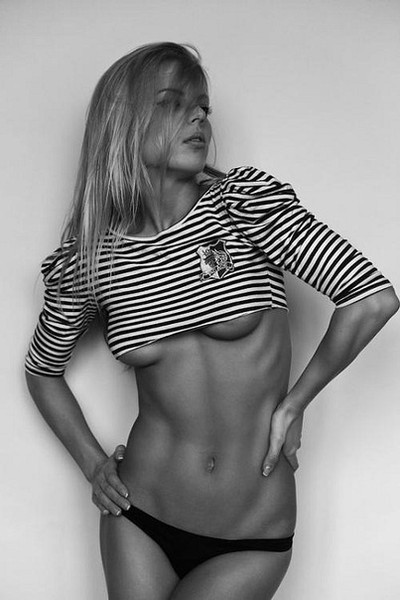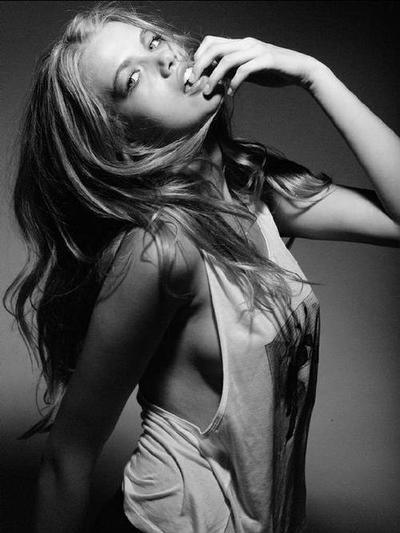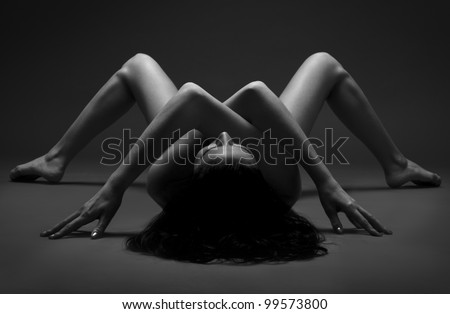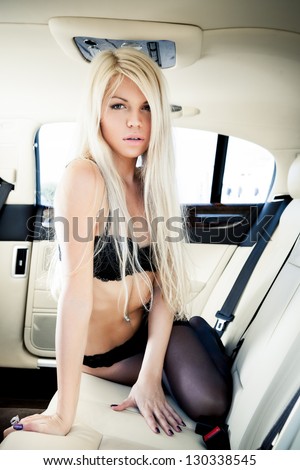U see,Travel Photography, Tips,photography sexy girl , photography people ideas, Night Photography, Long Exposure Photography, nature photography, Food Photography,fashion photography
Friday, June 14, 2013
Travel Photography Etiquette — 5 Tips When Photographing People
Trips provide the ideal time to discover new landscapes, cultures, and customs. For many travelers, photos are precious reminders of encounters and highlights along the way. Taking photos of people can be tricky, though. Here are our tips on how to be polite while photographing people during your travel adventures.
1: Permission is key. Get approval first and respect people’s wishes. If someone does not want their photo taken, don’t push the issue. For children, be sure to ask permission of a parent or guardian, no matter where you are in the world.
2. Say “Thank you”. Showing the photos you’ve taken to your subjects is a great way to say thank you. You may even offer to send them photos at a later date. If you do offer to send photos, be sure to follow through with your promise.
3. To Pay or Not to Pay? In popular destinations, you may be asked for money in exchange for taking their photo. Some people spend considerable time on their appearance and they expect compensation as a result. If you’re not willing to pay, be kind and move on to your next great photo. There are plenty of places where people don’t expect compensation.
4. Do you need a model release? You can find a wide variety of forums and blogs on this subject, but the general rule of thumb is this: If you’re not planning to profit from the image, you don’t need a model release.
5. How would you feel? If you’re not sure how to approach a particular person/ situation, just ask yourself how you’d feel if the roles were reversed. If you wouldn’t be comfortable with the tables turned, that’s the surest sign that the photo(s) shouldn’t be taken. Not all moments deserve to be captured by a camera.
Beautiful Long Exposure Photography - Patrick Smith

While high-dynamic-range (HDR) photographs are generally achieved using software such as Photoshop or Photomatix, long exposure photography is more of a waiting game. It's a technique that advanced photographers use to capture light and movement. Patiently they wait, slowing down the shutter speed, trying to capture just the right conditions to turn a photo into a piece of art.
Though many try, few can actually enhance the natural beauty of this world like Patrick Smith. Splitting his time between computer database programming and wide-angle landscape and seascape photography, Smith shocks us with his talent.
"I make very few photos, perhaps just one or two per week but I try to make each one the very best view possible of a particular scene. Of course, this is never quite possible but I will keep going back to a place, often risking my camera and myself hoping to capture the perfect moment. For me, it is the journey and not just the destination!
I want each photograph to be a work of art and not just a straight photograph and I capture it all in the camera and minimize post processing."

Big Sur - Garrapata Surf (1/4 second exposure)

Yosemite (30-second exposure )

Isla Mujeres, Mexico (30-second exposure)

Kauai, Hawaii (0.6-second exposure)

California Coast (30-second exposure)

Big Sur (60-second exposure)

San Francisco's Golden Gate Bridge (2-minute exposure)

La Jolla, CA (1/6-second exposure)

Big Sur - Portal of the Sun (1/6-second exposure)
Natural Light People Photography Workshop
, A few days ago, Creative Photo Workshops ran yet another one of our People Photography workshops. This workshop is among our most popular and teaches those who attend the value in all kinds of light, the context of it and the methods of its use. It also highlights the fact that great 'people pictures' are found anywhere that light can be found and used. Our old 'find the light and put them in it' mantra really comes to the fore here, and our customers learn how to see light, place the subject within it, pose them for it and meter for it. Sometimes a dozen or more different kinds of images can be made from the same shaft of light. We don't believe that great locations or supermodels are the makings of great photographs. The simple art of 'writing with light' takes care of that.
A few days ago, Creative Photo Workshops ran yet another one of our People Photography workshops. This workshop is among our most popular and teaches those who attend the value in all kinds of light, the context of it and the methods of its use. It also highlights the fact that great 'people pictures' are found anywhere that light can be found and used. Our old 'find the light and put them in it' mantra really comes to the fore here, and our customers learn how to see light, place the subject within it, pose them for it and meter for it. Sometimes a dozen or more different kinds of images can be made from the same shaft of light. We don't believe that great locations or supermodels are the makings of great photographs. The simple art of 'writing with light' takes care of that.
 The other aspect of this workshop is that we like to use models who are not necessarily going to make life easy for our customers by doing everything for them. Certainly they are attractive and need to be friendly and personable, but one of our greatest issues is getting people to interact with our models. So, we use models who don't necessarily have years of experience working with photographers. This forces our students to direct them, even as they would the every day people in their own lives who become the subjects for their own lenses in their own time. There are some serious spankings dished out to the silent photographers who just stand there and focus. Seriously though, there is nothing more frustrating for anyone who is being photographed than not knowing whether or not they look their best, or that they are meeting the photographer's vision. Give your models clear direction and they will not only respond, they will be relieved.
The other aspect of this workshop is that we like to use models who are not necessarily going to make life easy for our customers by doing everything for them. Certainly they are attractive and need to be friendly and personable, but one of our greatest issues is getting people to interact with our models. So, we use models who don't necessarily have years of experience working with photographers. This forces our students to direct them, even as they would the every day people in their own lives who become the subjects for their own lenses in their own time. There are some serious spankings dished out to the silent photographers who just stand there and focus. Seriously though, there is nothing more frustrating for anyone who is being photographed than not knowing whether or not they look their best, or that they are meeting the photographer's vision. Give your models clear direction and they will not only respond, they will be relieved. 
 A few days ago, Creative Photo Workshops ran yet another one of our People Photography workshops. This workshop is among our most popular and teaches those who attend the value in all kinds of light, the context of it and the methods of its use. It also highlights the fact that great 'people pictures' are found anywhere that light can be found and used. Our old 'find the light and put them in it' mantra really comes to the fore here, and our customers learn how to see light, place the subject within it, pose them for it and meter for it. Sometimes a dozen or more different kinds of images can be made from the same shaft of light. We don't believe that great locations or supermodels are the makings of great photographs. The simple art of 'writing with light' takes care of that.
A few days ago, Creative Photo Workshops ran yet another one of our People Photography workshops. This workshop is among our most popular and teaches those who attend the value in all kinds of light, the context of it and the methods of its use. It also highlights the fact that great 'people pictures' are found anywhere that light can be found and used. Our old 'find the light and put them in it' mantra really comes to the fore here, and our customers learn how to see light, place the subject within it, pose them for it and meter for it. Sometimes a dozen or more different kinds of images can be made from the same shaft of light. We don't believe that great locations or supermodels are the makings of great photographs. The simple art of 'writing with light' takes care of that. The other aspect of this workshop is that we like to use models who are not necessarily going to make life easy for our customers by doing everything for them. Certainly they are attractive and need to be friendly and personable, but one of our greatest issues is getting people to interact with our models. So, we use models who don't necessarily have years of experience working with photographers. This forces our students to direct them, even as they would the every day people in their own lives who become the subjects for their own lenses in their own time. There are some serious spankings dished out to the silent photographers who just stand there and focus. Seriously though, there is nothing more frustrating for anyone who is being photographed than not knowing whether or not they look their best, or that they are meeting the photographer's vision. Give your models clear direction and they will not only respond, they will be relieved.
The other aspect of this workshop is that we like to use models who are not necessarily going to make life easy for our customers by doing everything for them. Certainly they are attractive and need to be friendly and personable, but one of our greatest issues is getting people to interact with our models. So, we use models who don't necessarily have years of experience working with photographers. This forces our students to direct them, even as they would the every day people in their own lives who become the subjects for their own lenses in their own time. There are some serious spankings dished out to the silent photographers who just stand there and focus. Seriously though, there is nothing more frustrating for anyone who is being photographed than not knowing whether or not they look their best, or that they are meeting the photographer's vision. Give your models clear direction and they will not only respond, they will be relieved. 
Wedding Photography Workshop
 |
| Models: Dave Nelson and Brooke Boslem |

In 1996, my life changed dramatically when I took on the role of editor of a magazine I had proposed to a publishing company. It was known as PhotoMaster. It was also known as Better Pictures, which was the corporate version distributed by Camera House. From that moment on I was no longer a freelance gypsy with a camera. I suddenly became some kind of authority on photography. I was being asked to speak at camera clubs and societies, conventions and seminars. And then, I started running photography workshops. Since that time I have thoroughly enjoyed that role and I do not tire of it. Our recent Wedding Photography workshop was a prime example of that.
Creative Photo Workshops runs a variety of educational and enjoyable events. Most of the time, they are educational. Sometimes they are put together for a simultaneous combination of fun and learning. Case in point, our recent Film Noir workshops. Our Wedding Photography workshop has an entirely different potential however. Its very nature can alter the path of someone's secular life.
An overstatement? No. It is a workshop designed to teach ground level principles for overcoming some of the difficulties that the newcomer to wedding photography encounters. Most of those who attend are perfectly adept at taking the basics - family group photographs, candid images and even some lovely portraits and formals. However, for the photographer, a wedding is usually a case of producing extraordinary images in ordinary circumstances with everyday people. There are so models in $10, 000 dresses in ancient French castles here. Most weddings take place in suburbia, or in everyday situations. What we teach is the ability to create beautiful images - in camera - that impress on the day, and even more in the album once the finishing touches have been applied. Our workshops promote the idea of creating the image in camera - for two essential reasons. The camera is the primary capture tool and it can - believe it or not - create beautiful images all on its own. It is also a much more powerful business tool on location if the images you show your client as they are shot are already near perfect. Lightroom and PhotoShop are wonderful tools, and I love them both. However, they are there to enhance and create only those aspects of the digital image that cannot be created in camera. They should not exist for the photographer for the labour of constant and consistent repair.

The first part of the workshop happens all in the very room in which we hold our initial two hour lecture. Using basic window light, basic backdrops and basic metering techniques we prove that any location that has light can be used. Our customers left our workshop on the first day without having hardly left the room. And yet each of them was surprised with the images they themselves created. Using the camera manually, metering for the highlights and posing the subjects for the light are simple processes that have the power to transform the ordinary into the extraordinary.
Our second day is more complex. We began at the home of a friend who offered us a livingroom to prove that what we learned the day before works in most people's homes. Then, its off to various locations to find the light and put them in it. And, if the light is not what you want, we create it.
On and Off camera flash techniques were something that our customers asked us to explain and show from the outset. So, we did. Creating light when the light you want is not with you is a powerful addition to any photographer's toolbox. It has been the difference between mediocre and extraordinary at many of the weddings I have photographed, and the images that result in camera are enough to convince any dubious couple of your abilities or the images you are producing. After that, they are putty in your hands, willing models who are suddenly getting all funky for ya.
Our customers leave the workshop with skills that enable them to see light, meter for it and create images at their weddings - weddings that happen in our own surroundings. We want the couples who don't look like Brad and Angelina and who don't hold their receptions in ancient castles or mansions to still have the most beautiful images possible. That honours our process and our place as photographers. It also honours their wedding day and their love for each other.
Subscribe to:
Posts (Atom)



 var switchTo5x=true;
var switchTo5x=true;




































